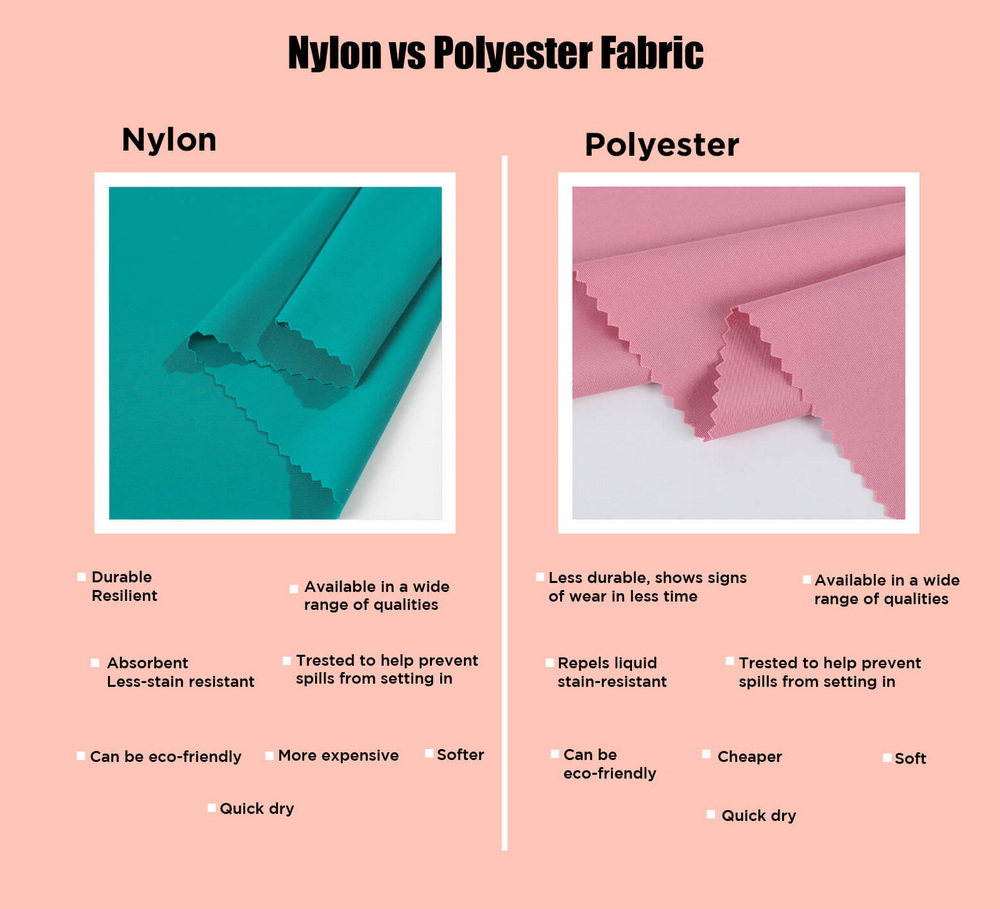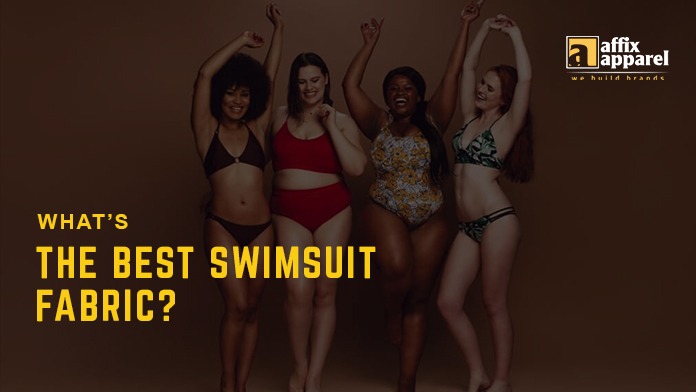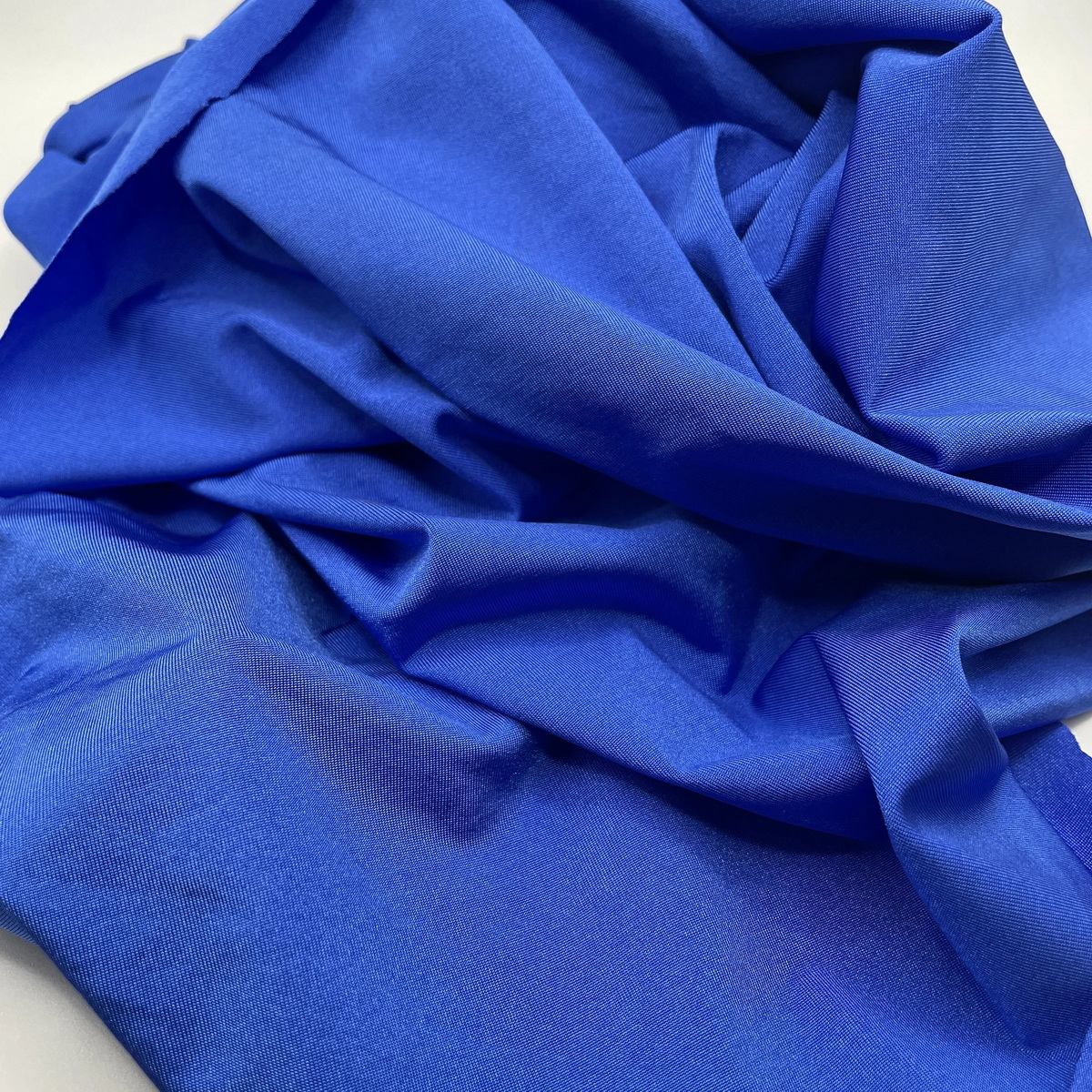Content Menu
● Understanding Polyamide and Polyester
>> Polyamide (Nylon)
>> Polyester
● Comparing Polyamide and Polyester for Swimwear
>> Durability and Strength
>> Elasticity and Fit
>> Moisture Management
>> UV Resistance
>> Chlorine Resistance
>> Comfort and Feel
>> Environmental Considerations
● Making the Choice: Polyamide or Polyester?
● Conclusion
● Frequently Asked Questions
>> 1. Q: Is polyamide or polyester more durable for swimwear?
>> 2. Q: Which fabric is better for competitive swimming?
>> 3. Q: Can polyamide and polyester be recycled?
>> 4. Q: Which fabric provides better UV protection?
>> 5. Q: Is polyamide or polyester more comfortable for swimwear?
● Citations:
When it comes to choosing the ideal fabric for swimwear, two synthetic materials often stand out: polyamide (also known as nylon) and polyester. Both fabrics have their unique properties and advantages, making the choice between them a matter of specific needs and preferences. This comprehensive guide will explore the characteristics of polyamide and polyester, comparing their performance in swimwear applications to help you make an informed decision.

Understanding Polyamide and Polyester
Before diving into the comparison, let's briefly examine what these fabrics are and their general properties.
Polyamide (Nylon)
Polyamide, commonly known as nylon, is a synthetic polymer with a wide range of applications, including textiles. It was first introduced in the 1930s and quickly gained popularity due to its strength and versatility.
Key properties of polyamide:
- Excellent strength and durability
- High elasticity and flexibility
- Soft and smooth texture
- Good moisture-wicking abilities
- Quick-drying
Polyester
Polyester is another synthetic fiber widely used in the textile industry. It was developed in the 1940s and has since become one of the most popular fabrics for various applications, including sportswear and swimwear.
Key properties of polyester:
- High durability and strength
- Excellent resistance to wrinkles and shrinking
- Good color retention
- Quick-drying
- Resistant to many chemicals

Comparing Polyamide and Polyester for Swimwear
Now, let's compare these two fabrics specifically in the context of swimwear, considering various factors that are important for this application.
Durability and Strength
Both polyamide and polyester are known for their durability, but they have slight differences in this aspect.
Polyamide: Generally considered more durable and abrasion-resistant than polyester. It has excellent tensile strength, making it less likely to tear or snag[1].
Polyester: While also durable, polyester may not be as resistant to abrasion as polyamide. However, it maintains its shape well over time and resists pilling better than polyamide[2].
Elasticity and Fit
The ability to stretch and retain shape is crucial for swimwear comfort and performance.
Polyamide: Offers superior elasticity and flexibility. When blended with elastane (spandex), it provides excellent stretch and recovery, ensuring a snug fit that moves with the body[1].
Polyester: While not as naturally elastic as polyamide, modern polyester blends with elastane can offer good stretch and recovery. However, it may not match the level of flexibility provided by polyamide[2].
Moisture Management
Effective moisture management is essential for swimwear to ensure comfort both in and out of the water.
Polyamide: Has good moisture-wicking properties and dries quickly. However, it tends to absorb more water than polyester, which can make it feel heavier when wet[3].
Polyester: Excels in moisture management. It has lower water absorption, meaning it dries faster and feels lighter when wet. This property makes polyester particularly suitable for competitive swimwear[3].
UV Resistance
Protection from the sun's harmful rays is an important consideration for swimwear fabrics.
Polyamide: Offers some natural UV resistance, but it can degrade over time with prolonged exposure to sunlight[1].
Polyester: Generally has better UV resistance than polyamide. Many polyester swimwear fabrics are treated with UV-protective finishes for enhanced sun protection[2].
Chlorine Resistance
For swimwear used frequently in chlorinated pools, resistance to chlorine is crucial for longevity.
Polyamide: More susceptible to chlorine damage. Regular exposure to chlorine can cause the fabric to break down faster and lose its elasticity[1].
Polyester: Offers superior chlorine resistance. It maintains its strength and color better when exposed to chlorinated water, making it a preferred choice for frequent swimmers or competitive swimwear[2].
Comfort and Feel
The texture and feel of the fabric against the skin are important for overall comfort.
Polyamide: Generally softer and smoother to the touch. It provides a luxurious feel and drapes well on the body[1].
Polyester: While modern polyester fabrics have improved significantly, they may not match the softness of polyamide. However, many people find polyester comfortable for swimwear applications[2].
Environmental Considerations
As sustainability becomes increasingly important, the environmental impact of fabrics is a crucial factor to consider.
Polyamide: Production of polyamide can be energy-intensive and relies on non-renewable resources. However, recycled nylon options are becoming more available[4].
Polyester: While also derived from non-renewable resources, polyester is more easily recycled. Many swimwear brands now offer suits made from recycled polyester (often from plastic bottles), reducing environmental impact[4].

Making the Choice: Polyamide or Polyester?
Choosing between polyamide and polyester for swimwear ultimately depends on your specific needs and preferences. Here are some scenarios where one might be preferred over the other:
Choose Polyamide if:
- You prioritize softness and a luxurious feel
- You need maximum stretch and flexibility
- You're looking for fashion swimwear with a sleek, form-fitting appearance
Choose Polyester if:
- You swim frequently in chlorinated pools
- You need maximum UV protection
- You prioritize quick-drying properties
- You're looking for competitive or performance swimwear
Many high-quality swimsuits actually use a blend of both polyamide and polyester, along with elastane, to combine the benefits of both fabrics.

Conclusion
Both polyamide and polyester have their strengths when it comes to swimwear. Polyamide offers superior softness, stretch, and a luxurious feel, making it excellent for fashion swimwear. Polyester, on the other hand, excels in chlorine resistance, UV protection, and moisture management, making it ideal for performance and frequent-use swimwear.
Ultimately, the best choice depends on your specific needs, how you plan to use the swimwear, and your personal preferences. Whichever fabric you choose, look for high-quality construction and proper care to ensure your swimwear lasts as long as possible.
Frequently Asked Questions
1. Q: Is polyamide or polyester more durable for swimwear?
A: Both are durable, but polyamide generally offers better abrasion resistance, while polyester maintains its shape better over time.
2. Q: Which fabric is better for competitive swimming?
A: Polyester is often preferred for competitive swimming due to its superior chlorine resistance and quick-drying properties.
3. Q: Can polyamide and polyester be recycled?
A: Yes, both can be recycled. However, polyester is more commonly recycled in the swimwear industry.
4. Q: Which fabric provides better UV protection?
A: Polyester generally offers better UV resistance, especially when treated with UV-protective finishes.
5. Q: Is polyamide or polyester more comfortable for swimwear?
A: Polyamide is generally considered softer and more comfortable, but modern polyester fabrics have significantly improved in comfort.
Citations:
[1] https://affixapparel.com/blog/swimsuit-fabric/
[2] https://baliswim.com/choosing-swimsuit-material-the-best-swimsuit-fabric-for-you/
[3] https://www.reddit.com/r/sewing/comments/1917bfg/what_makes_something_a_swimwear_fabric/
[4] https://www.zappos.com/women-swimwear/CKvXARDR1wE6AqoQwAEB4gIEAQIYBw.zso
[5] https://www.etsy.com/market/polyester_swimwear
[6] https://www.swimwearmanufacturers.co.uk/post/polyamide-fabric-can-it-be-used-for-swimwear
[7] https://www.activewearproductions.com/polyester-vs-polyamide/





































